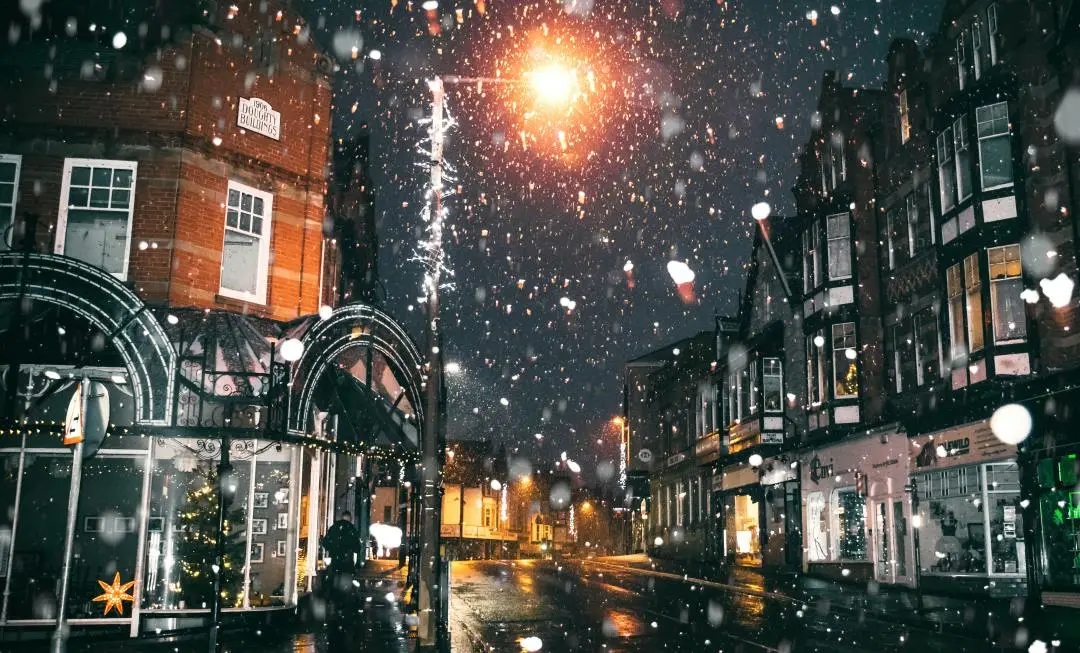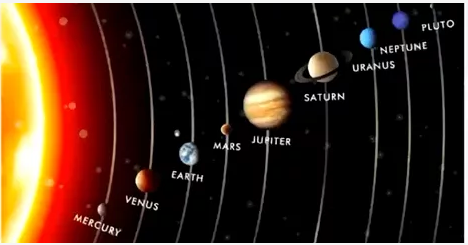同学们是否有这样的经历,花了好大的功夫练习精听,辨音能力提高了,看美剧可以不开字幕了,可一旦遇到自己不熟悉的学科讲座,还是失败了。
托福听力lecture话题广泛,其中不乏一些专业性很强的领域,考生需要储备一定的背景知识,才能应对又难又杂的讲座。

托福听力讲座的主题主要分为四类:生命科学、艺术、自然科学、社会科学。
以2020年线下考试为例,自然科学稳居榜首,艺术话题紧随其后,再其次是生命科学相关文章,最后是社会科学类。
在自然科学下的细分话题中天文学,环境科学,地质学居多,而其中天文学,也是很多同学一听就跪的话题,所以大家备考过程中一定不能忽视相关背景知识的储备。
天文常考到的话题有:太阳系的形成、月球的陨石、太阳黑子、火星大气层、天文望远镜等,我们也可大致分为三大类:
天文现象的认识过程,如讲述人们对太阳黑子的认识过程;
天体介绍,如介绍小行星、彗星、陨石等天体;
天文学的应用,如 人类如何利用天文学来导航。
我们不难发现,常考的天体及天文现象大都集中在太阳系,所以针对于solar system我们需要非常熟悉。
知识点一:八大行星

太阳系八大行星可按照形态分为类地行星(Terrestrial planets)和类木行星(Jovian planets),以下的视频可以帮助大家进行快速了解。
(TPO13L4)The terrestrial planets--like Mars and Earth--composed largely of rocks and metals, and the large gas giants, like Jupiter.
Well, the solar system also has two analogous classes of objects, smaller than planets--namely, asteroids and comets. Relatively near the sun and inner solar system, between Jupiter and Mars to be precise, we’ve got the asteroid belt, which contains about 90 percent of all asteroids orbiting the sun.
These asteroids are...uh...like the terrestrial planets, and they're composed mostly of rocky materials and metals. Far from the sun, in the outer solar system, beyond Jupiter's orbit, temperatures are low enough to permit ices to form out of water and...and out of gases like methane and carbon dioxide.
Loose collections of these ices and small rocky particles form into comets. So comets are similar in composition to the gas giants.
太阳系中,行星分为两类:主要是岩石和金属组成的类地行星,比如火星和地球;气体巨行星,比如木星。
太阳系也有两个相似的、比行星小的类型对象,即小行星和彗星。
在太阳系内,比较靠近太阳的地方,准确的说是在木星和火星之间,是小行星带,这里有围绕着太阳的90%的小行星,这些小行星像类地行星,大多是由岩石和金属组成的。
在太阳系外围远离太阳、超越木星的轨道的地方,温度低到足以让水、甲烷和二氧化碳等变成冰,这些冰和水的小颗粒松散集合起来组成了彗星,所以,彗星和气体巨行星在组成成分上很相似。
类木行星在托福听力中经常以gas giants(气体巨行星)的称号出现,因其组成和木星类似,质地密度较小,由气体组成而得名。
木星Jupiter是太阳系中的老大哥,质量和体积都是太阳系No. 1,主要由Hydrogen氢气和Helium氦气组成,是托福听力的万年常考王。
知识点二:土星环
八大行星谁是已婚的?土星,因为它有shinny ring.
说到土星,同学们第1会想到土星环(Saturn‘s ring),关于它的形成有多种理论,其中有一种常考理论是土星的卫星造就了土星环。
(TPO53L4)The moons, the dozens of moons, they all orbit Saturn, are providing raw material for the rings.
A moon in the system is complex at Saturn’s, and Saturn has at least 49 known moons which vary tremendously in size and shape.
A moon in such a complex system, is not only affected by the gravitational force of the planet, but also by that of the other moons.
So the planet may be pulling a moon one way, and other moons may be pulling it other ways. Such forces could actually alter a moon's orbit, and as a result there might be a collision when moon might crash into another.
And the debris from that collision could become part of the rings.
土星的几十个卫星,它们都环绕着土星,给土星环提供了原料。
土星已知的至少49个卫星大小形状各异,在这个复杂的系统中,一个卫星不仅被行星(土星)的重力影响,还被其他卫星的重力影响。
土星可能会把一个卫星拉向一个方向,而其他的卫星会把这个卫星拉向另一个方向,这种力量能够改变卫星的轨道,从而可能引起卫星相互撞击,撞击产生的碎片就会变成土星环的一部分。
知识点三:极光
“爱是一道光,如此美妙,指引我们想要的未来。魔力北极光,奇幻的预言,赶快去找不思议的爱。”
极光(Aurora)绚丽多彩,在地球南北两极附近地区的高空,夜间出现的灿烂美丽的光辉。
极光常常出现于纬度靠近地磁极地区上空,一般呈带状、弧状、幕状、放射状,这些形状有时稳定有时作连续性变化。
极光产生的条件有三个:大气、磁场、高能带电粒子。
令人着迷的极光也在托福考试中占有重要的一个席位,考题中也多次出现它美丽的身影。
(TPO55L3)By the early 20th century it was found that Earth's magnetic field is constantly being bombarded by charged particles streaming from the Sun.We call it solar wind.
These charged particles interact with Earth's magnetic fields arid they’re pulled toward the North and South poles. Some of them make it into our upper atmosphere where they collide with atoms, with oxygen and nitrogen atoms. This collision causes these items to light up, to glow. Different types of atoms glow in different colors.
And this is what’s happening when we are seeing aurora.
20世纪初,人们发现地球磁场不断受到来自太阳的带电粒子的轰击,我们称之为太阳风。
带电粒子与地球磁场互相作用,它们被拉向北极和南极。他们中的一些进入我们的高层大气,在那里他们与氧原子和氮原子发生碰撞,这种碰撞使原子发光发亮。不同类型的原子发出不同的颜色,这就是我们看到的极光。
好了,今天的背景知识就分享到这里,熟知背景知识是成功的一半,同学们还需要不断积累哦。
如果你想了解更多雅思托福课程,留学规划或者有任何疑问,欢迎联系新航道重庆学校。
新航道重庆学校:cq.xhd.cn
新航道重庆学校电话:400-185-9090
推荐阅读:
官方消息:中国教育考试局关于调整2020年7月雅思考试的消息
一起来唠唠出国留学英国后的那些“坑”,用自己的血泪教训给大家排个雷~
关于QS排名前100的澳洲院校的花费大全来啦,想去这些学校的小伙伴们有没有准备好钱包呀?